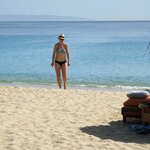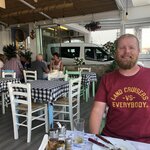Highlights
- Learn the mythology behind the Acropolis and Athens' ancient sites with a guide
- Learn to cook (and eat!) the recipes of the ancient Greek world
- Live like a local in the port city of Chania, taking in the beauty of today
- Discover hidden gems and taste wines unique to Santorini's volcanic soil
- Relax on some of the most beautiful beaches in Greece
Brief Itinerary
| Day | Highlights | Overnight |
|---|---|---|
| Day 1 | Arrive in Athens | Athens |
| Day 2 | Acropolis & Ancient Greek Mythology & Museum Tours | Athens |
| Day 3 | Day Trip to Delphi | Athens |
| Day 4 | Day Trip to Kallimarmaro & Ancient Cooking Class | Athens |
| Day 5 | Fly to Chania, Explore | Chania |
| Day 6 | Guided Chania Old Town Tour | Chania |
| Day 7 | Boat Trip to Gramvousa & Balos Beaches | Chania |
| Day 8 | Transfer to Heraklion via Rethymno & Knossos | Heraklion |
| Day 9 | Ferry to Santorini, Hidden Gems Tour & Wine Tasting | Santorini |
| Day 10 | Morning Tour to Prehistoric Akrotiri, Afternoon Beach Day | Santorini |
| Day 11 | Ferry to Naxos, Explore | Naxos |
| Day 12 | Guided Ancient Naxos Hike | Naxos |
| Day 13 | Naxos Beach Day | Naxos |
| Day 14 | Return to Athen, Depart |
Detailed Itinerary
Day 1: Arrive in Athens
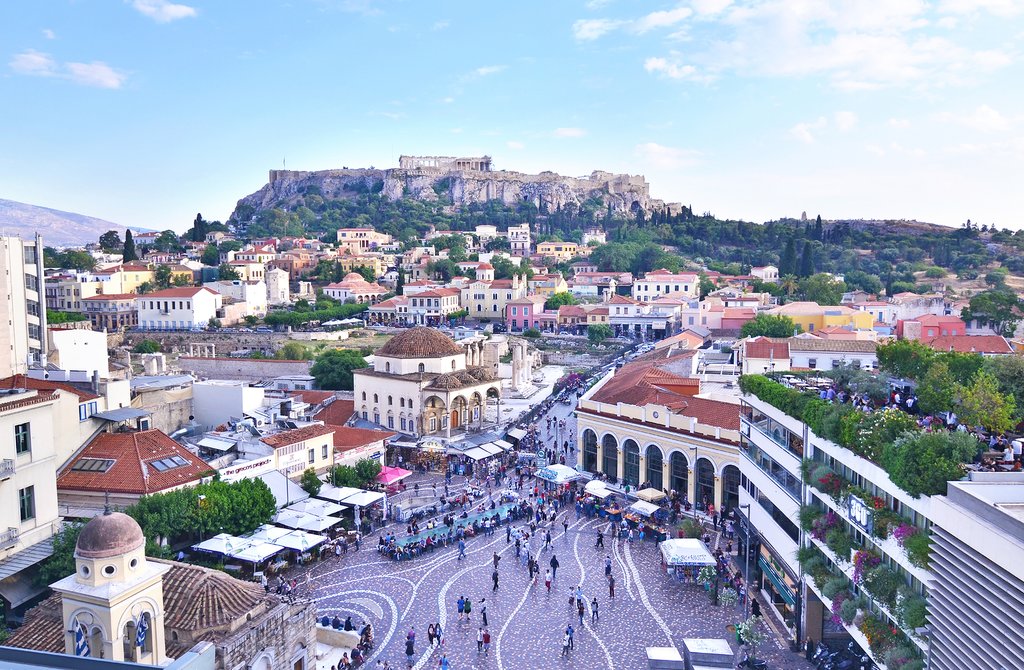
Welcome to Greece! You'll begin your trip in Athens, home to the iconic Acropolis and much more. The mythology of this spectacular city precedes it, with towering temples to Classical deities and the ruins of ancient marketplaces rubbing shoulders with lively nightlife, crowded flea markets, and contemporary cuisine. Make the most of your time in the city at some of these spots:
- Check out the views of the can't-miss Parthenon. (Pro tip: The Parthenon is the temple, and the Acropolis is the hill.) This temple to Athena has enchanted visitors since its construction was completed in 438 BCE. It's probably the first thing that comes to your mind when you think of ancient Greece and is visible from many of the city's high points.
- Stop at the sprawling National Museum for a crash course in ancient iconography. Be sure to seek out the room housing the Antikythera mechanism, essentially an ancient astronomical computer.
- Visit a smaller archaeological site at the Tower of the Winds, then stroll down neighboring pedestrian Aiolou Street to stop at shops and cafés.
- Find your perfect souvenir or sun hat in the busy stalls of the Monastiraki flea market.
Spend your evening exploring the up-and-coming Pangrati neighborhood or amid the nightlife and mezze of the Psyrri district.
Day 2: Acropolis & Ancient Greek Mythology & Museum Tours
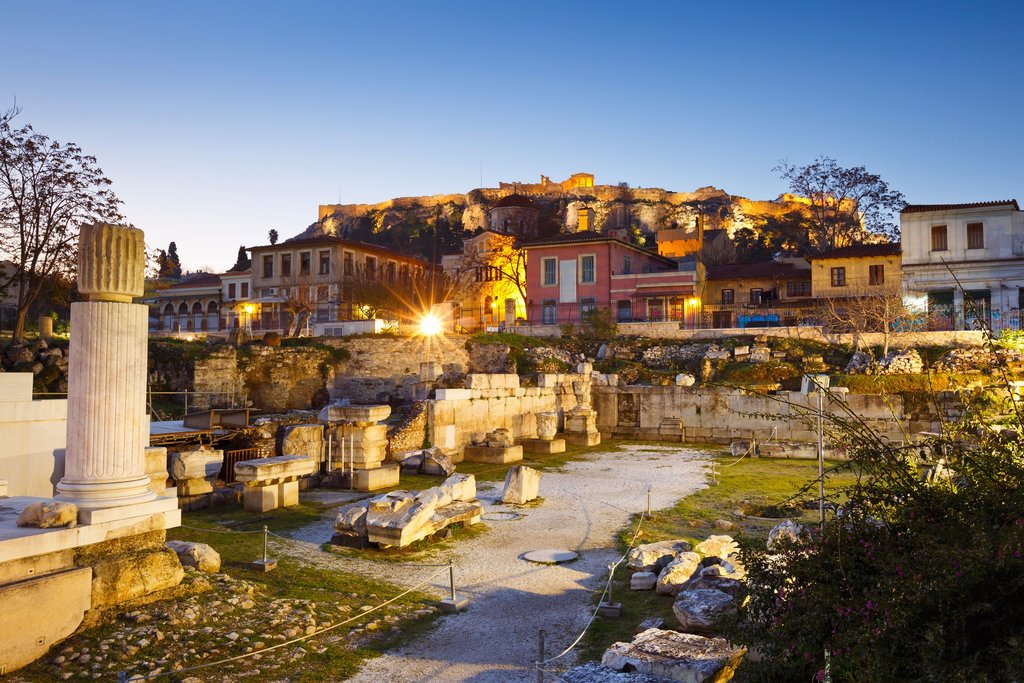
Experience the ancient stories surrounding you with today's guided mythology tour. You'll meet your guide and storyteller at the Temple of Olympian Zeus, then head to landmarks around the city, including the Acropolis, the ancient cemetery at Kerameikos, and the Agora. The myths that founded the city and are featured in its retellings for generations will accompany you as you go, with stories of Zeus, Athena, Poseidon, Dionysus, and more. Hear the stories and the historical facts behind them, adding resonance to the archaeological ruins you will visit during this four-hour tour.
Stick with the supervised experience with another guided tour at the Acropolis Museum in the afternoon. Named one of the 10 best museums in the world by National Geographic, this modern museum houses a multitude of artifacts removed from the hill of the Acropolis for safekeeping to provide insight into ancient religious practices and daily life. Linger for lunch in the museum's café, with views of the artifacts' former hilltop home.
As night falls, you may be able to visit the Athens Observatory to learn about the constellations overhead and take a look through the telescope. Its hours vary seasonally and by day of the week.
Day 3: Day Trip to Delphi

Today, you'll seek out the oracle during a day trip to the ruins of Delphi, once home to priestesses of Apollo who Ancient Greeks believed could predict the future. Take a guided tour through this sprawling archaeological site, and discover the Treasury of the Athenians, the Temple of Apollo, and an expansive theater. Explore the ruins or venture up an ancient footpath once used by worshippers of the god Pan, who started from the temples of Delphi and proceeded to Corycean Grotto for their religious rites, surrounded by the valley of olive trees and views of the Corinthian Gulf and peaks of the Peloponnese on your way.
Don't skip the neighboring museum, which contains masterpieces such as the Bronze Charioteer and the image of the famous athlete Aghias.
Day 4: Day Trip to Kallimarmaro & Ancient Cooking Class
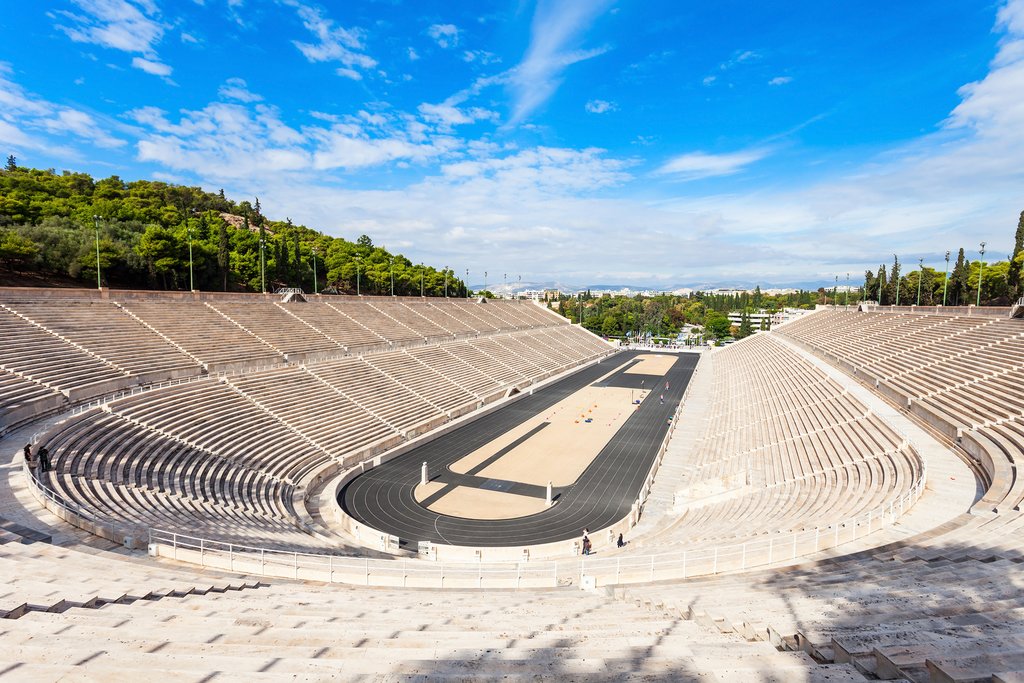
Start this morning with a trip to the sweeping stands of Kallimarmaro, also known as the Panathenaic Stadium. The grand facility made entirely of marble was constructed in 1896 to host the first modern Olympics and is made entirely out of marble to honor the ancient stadiums.
Once you've been sufficiently inspired to feats of athleticism, you'll move on to feasts of Greek cuisine instead. A resident chef will take you on a journey of discovery into the methods used by the Ancient Greeks to cook their meals. You'll use ingredients available today to reproduce the distinct flavors found in classical dishes over the course of this 3-hour class. And no class is complete without the opportunity to sample the fruits of your labor over dinner (with wine included, of course).
Day 5: Fly to Chania, Explore
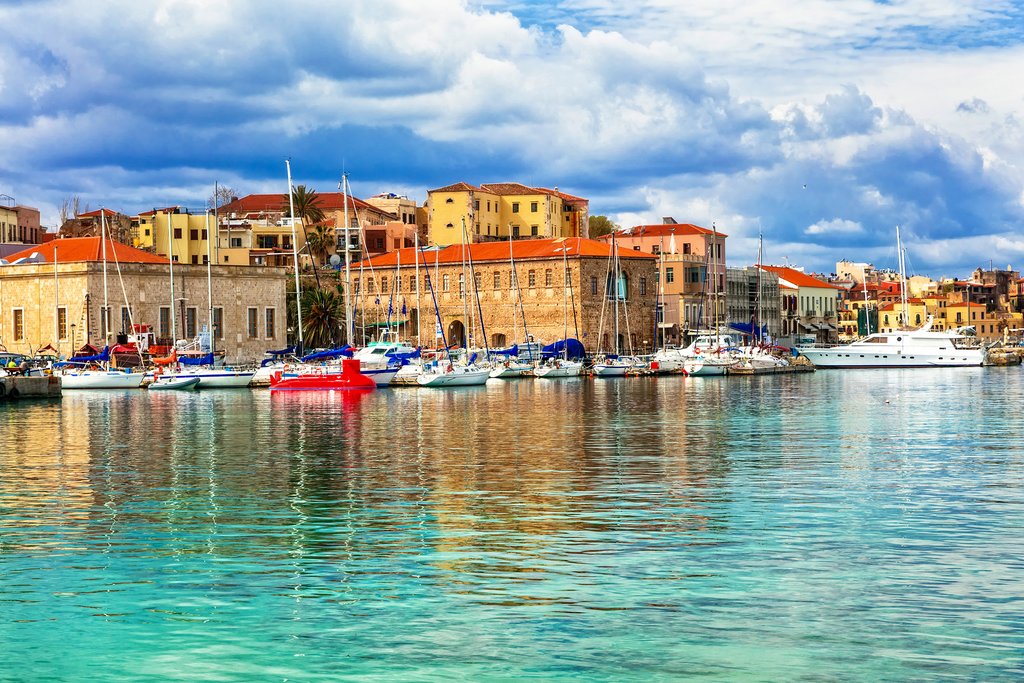
Today's short flight will take you to Crete, the largest and most populous of the 230 inhabited Greek islands. Upon arrival to Chania, a city (and region) on the northwest coast, you'll be transferred to your hotel as you get ready to explore this stunning island, equipped with tips from your local specialist. Chania itself will be the main base of your operations during your trip. It's the second largest city in Crete and one of the most scenic spots on an island, with stiff competition for that title. Life in this former Venetian city revolves around its charming 14th-century harbor, narrow streets with winding alleys, and colorful architecture influenced by past Ottoman and Egyptian eras.
Depending on when you arrive, wander around town or head for one of the western region's spectacular beaches, such as Falassarna and Elafonissi. There are also plenty of deserted coves and quiet bays to enjoy total privacy.
For dinner, wander around Chania's harbor and check out several waterfront restaurants with a sunset view.
Chat with a local specialist who can help organize your trip.
Day 6: Guided Chania Old Town Tour

Today, you'll experience the streets, buildings, high spots, neighborhoods, and monuments only locals know with a guided tour. Walk the stone paths where the Venetians, the Ottomans, and older generations of Cretans used to live and work, admiring the flower-decorated neighborhoods. You'll learn about Cretan history, mythology, and traditions, meet the locals, and eat like the locals.
Visit the neighborhoods of Topanas, Splantzia, Kolombo, and Kasteli, along with high spots to admire the panoramic view of the harbor and traditional Cretan taverns and magnificent buildings. You'll also see the ruins of the great Minoan city of Kydonia and the high walls of former Venetian moats now integrated into the city.
When hunger strikes, visit the Municipal Market of Chania and the neighboring Municipal Garden to enjoy a coffee amid the shade of the trees or garden clocktower. Then, top it off with a sunset drink on the rooftop at trendy Pallas.
Day 7: Boat Trip to Gramvousa & Balos Beaches
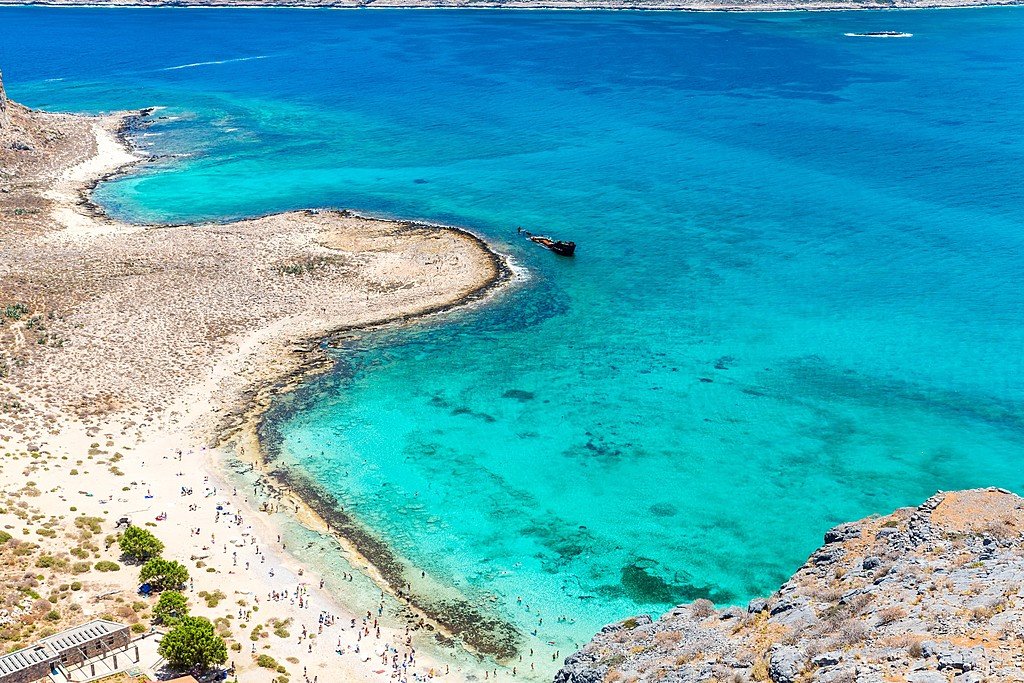
Spend your day on the pink sands of some of the most beautiful beaches in the world. You'll be transported by boat to Balos and Gramvousa beaches, where crystal-clear turquoise waters are home to stellar swimming, sunshine, and protected animal and plant species. If you're lucky, you may even spot a Mediterranean seal. In Gramvousa, you can also hike up to a former Venetian castle or a shipwreck along the beach. Nearby Balos is a shallow, more protected lagoon, home to calm waters.
After you've sunned and swum to your heart's content, return to Chania for your final night on the town. Visit the graves of the Eleftherios Venizelos family, one of Greece's most notable political figures, for spectacular panoramic views.
Day 8: Transfer to Heraklion via Rethymno & Knossos

After breakfast, you'll venture to the aristocratic seaside town of Rethymno—the island's intellectual and cultural capital. Wander around the town's lively Venetian harbor, check out the town's 19th-century lighthouse, or stroll along the sandy Rethymno beach.
Next, visit the city of Heraklion and archaeological site at Knossos, roughly an hour's drive away. Start by visiting Heraklion's Archaeological Museum, home to one of the world's largest collections of Minoan artifacts. This is an excellent crash course for the next stop, located just outside town: the 3,500-year-old Minoan palace of Knossos, a sprawling maze of royal chambers, grand staircases, storerooms, and workshops. This evocative Bronze Age site is believed to be Europe's oldest city, and you'll learn all about its history and mythology with your guide.
Spend the evening strolling with the locals through the old town of Heraklion. A pleasant pedestrian street connects the port area with Lion's Square and its Venetian Fountain.
Day 9: Ferry to Santorini, Hidden Gems Tour & Wine Tasting
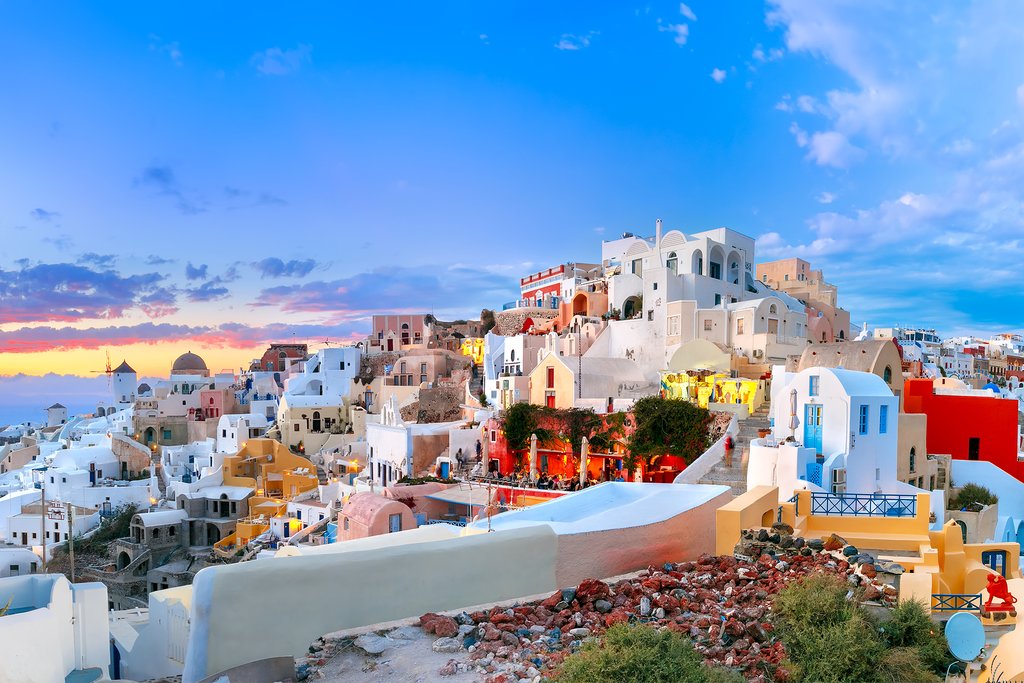
Welcome to Santorini! There's nothing like catching your first glimpse of the island's iconic cliffside architecture. Once settled, watch for your first views of Santorini's central caldera—the site of one of the largest volcanic eruptions in history—rising in a crescent. Spend some time after you've settled in to wander the streets of Fira or get beachside. Don't wear yourself out too soon, though, as in the afternoon, you'll take a guided tour showing you a side of Santorini that most travelers don't see.
You'll start with a stroll through the famous Oia, where your guide will point out hidden treasures, followed by a trip up to the highest peak on the island, with 360-degree views at the top for the perfect souvenir photo (or five). Then head on to the medieval villages at Megalochori and Pyrgos, which feel a world away from the touristy towns along the caldera rim. Finally, you'll stop for a wine tasting at the caldera's edge to sample varietals dating back centuries as you watch the sun sink into the Aegean.
In the evening, head back to Oia, passing the blue domes of Firostefani along your way. The furthest town along the rim of the caldera, Oia's arty streets are the most famous spot for sunset views, but the evening after the crowds have died down is one of the best times to wander the alleys and linger in the town's tavernas. When searching for your dinner, seek out tomato keftedes, deep-fried tomato balls that encapsulate the essence of the Mediterranean diet, and the Santorini specialty spelt pie.
Day 10: Morning Tour to Prehistoric Akrotiri, Afternoon Beach Day

Take a guided tour of one of the Aegean's most significant prehistoric settlements. You'll head to the excavated city at Akrotiri, hidden away at the southern tip of Santorini on the slopes of the caldera. These ruins were once the site of one of the Bronze Age's most advanced settlements, which prospered for centuries before being buried by a volcanic eruption in the mid-second millennium BCE. You'll have the morning to explore its well-preserved (thanks to the volcanic eruption) streets alongside a local guide who will share its stories.
On your way back, stop to see the three bells of Fira. The trio of bells atop this blue-domed church is pictured on many of the postcards you'll find on the island. It's your turn to take a photo of your own.
Unwind on the beach for the remainder of your afternoon. The black sands of Perissa and Kamari are always popular, but the colorful Red or White beaches are also well worth seeing. Or seek out some solitude within the cliffs at Koloumbos on the island's northern tip.
Day 11: Ferry to Naxos, Explore

Time to ferry over to bustling Naxos after breakfast. With a busy main town where you can shop and admire Venetian architecture, a historic Kastro (castle) area, and expansive beaches, the island offers laidback relaxation and water or land activities. The rest of the day is yours to unwind as you choose. Try out some of these options:
- Hike up to the summit of Mount Zas, the mythological childhood home of Zeus, the ruler of the gods, and the highest point in the Cyclades.
- Head inland to the town of Chalki, home to the island's oldest market and a shady square perfect for whiling away the afternoon. Make sure to stop at the kitron distillery to sample the local liqueur and learn about its distillation process over the years.
- Visit the Temple of Demeter at Sangri on your way. Multiple deities of fertility were worshipped here, particularly the goddess Demeter. The temple was constructed in 530 BCE, during the tyranny of Lygdamis, and represents a precursor of classical Athenian architecture.
- Stroll to the Portara, the entrance to the Temple of Apollo. Construction on the temple began in the sixth century BCE but was never finished, but the still-standing entranceway has become one of the hallmarks of the island. You can find it on the islet of Palatia, just over a causeway from the heart of Naxos Town (Chora).
For dinner, wander up the hill through the streets of the Kastro neighborhood to pick out your favorite of the area's tavernas, where you can sample the island's fresh produce in its best forms.
Day 12: Guided Ancient Naxos Hike

After breakfast, head to the village of Myli, where you'll pick up an old footpath that leads to the island's ancient aqueduct. Hike up to the nearby quarry, where you'll find two large kouros, unfinished statues of ancient Greek gods, lying on the ground. Originally intended to hold up a temple roof, these giant statues were abandoned by their ancient sculptors when they discovered faults in the marble, but they're no less impressive for that today.
Pass the statues along with olive groves, orchards, and a shady riverside. You'll visit the Catholic church of Theoskepasti, also known as Agios Mamas, the island's oldest chapel, along with Episkopi, the summer residence of the Catholic archbishop, on this 2.5-hour guided hike.
Stop in Mesi Potamia on your way back to town to take a break at a taverna under the trees on the river bank. Spend your afternoon exploring the town along with its neighboring riverside settlements at Ano Potamia and Kato Potamia, connected by a walking path, or return to town for a well-deserved beach break.
Day 13: Naxos Beach Day
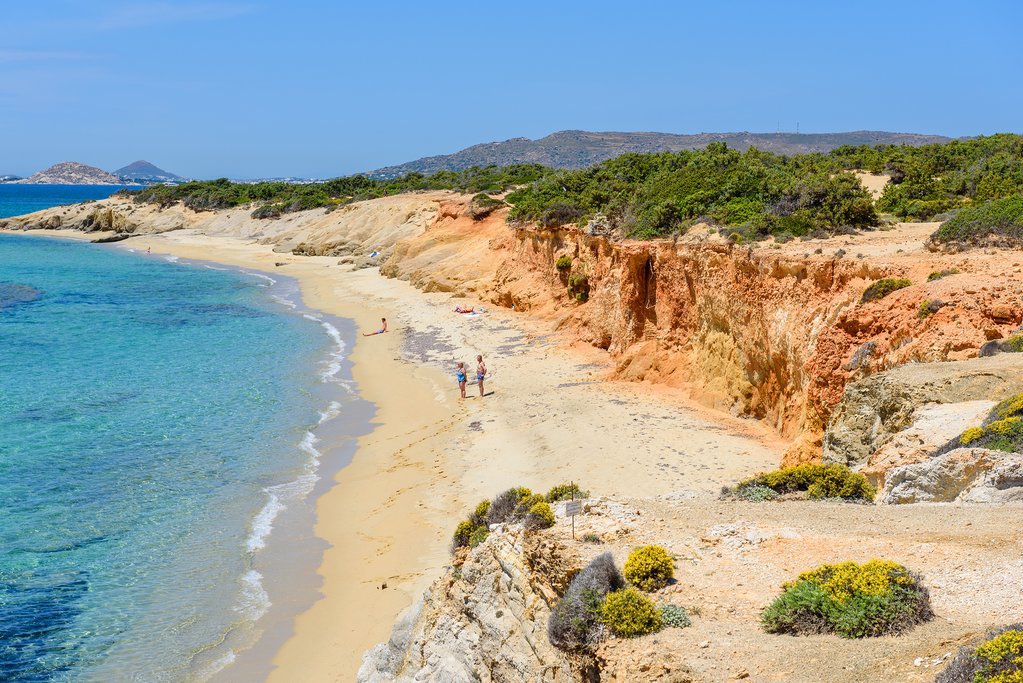
What's a trip to the islands without a day on the beach? With smaller crowds than its Cycladic neighbors, Naxos makes it easy to find your own slice of paradise, whether you want privacy or a more lively scene. Terminology tip: If a beach is described as "organized," that generally means it has sunbeds and umbrellas available to rent and plentiful restaurants.
Agios Georgios is the closest to the main town and is generally filled with families enjoying the shallow waters. Neighbors Agia Anna and Agios Prokopios also have plenty of amenities on their sweeping sands, with enough shoreline that you'll be able to stake out a spot but good tavernas to keep you fed.
The more isolated beaches of the southwest coast—including Plaka, Mikri Vigla, and cedar-lined Aliko—are some of the best on the island. They're farther from the main town, and your travel will be rewarded with quieter sands and scenic surroundings.
Day 14: Return to Athen, Depart

It's time to wave goodbye to Naxos! After breakfast, you'll be transferred to either Naxos Port or the island's small airport to return to Athens in time for your departure.
More Great Greece Itineraries
Looking for more inspiration for your trip to Greece? Check out these other Greece itineraries, explore different ways to spend two weeks in Greece, or discover the best time to visit Greece.




